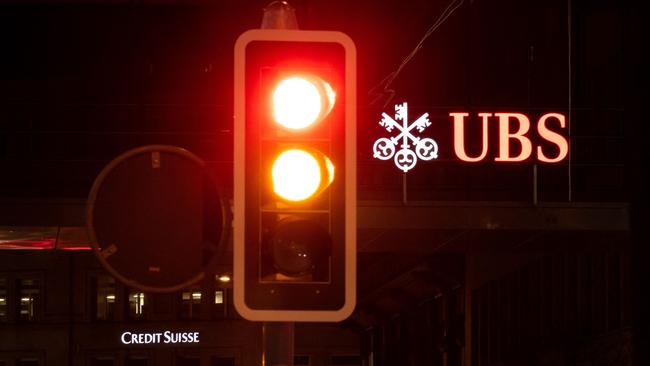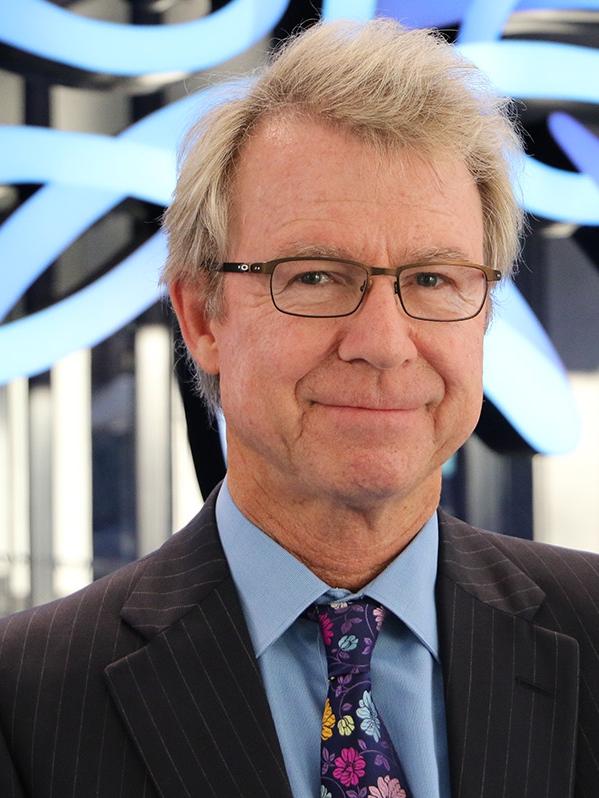Regulators here on alert over Credit Suisse’s $US2bn in Aussie deposits and UBS rescue deal
Australian regulators will be watching for the local implications of Swiss authorities’ latest efforts to restore trust in the financial system.

Australian financial regulators will be watching UBS Group’s cut-price rescue deal for its troubled rival Credit Suisse - one of the most significant moments in the banking world since the 2008 financial crisis.
Credit Suisse has an Australian banking licence with about $4.6bn in local deposits from high net worth clients, according to the latest data from the Australian Prudential Regulation Authority. Meanwhile, its Australian lending book is worth about $4.1bn.
Locally, the Reserve Bank is responsible for maintaining the stability of Australia’s financial system and responds to risks and disturbances via the Council of Financial Regulators, which includes APRA, Treasury and ASIC.
In Switzerland, UBS has finalised its takeover of Credit Suisse.
But securing calm is not guaranteed. First Republic Bank shares dived almost 30 per cent during US trading on Friday despite America’s biggest banks orchestrating a multibillion-dollar rescue deal. Credit Suisse shares closed down 8 per cent on Friday night.
The developing international banking crisis comes as rapid interest rate increases exposed cracks in banks’ risk policies, stemming from bad management and regulatory gaps.
The dramatic events, including the failure of Silicon Valley Bank – the biggest banking collapse since the global financial crisis – has prompted a reassessment of recession risk and peak rate forecasts.
Bank borrowing from the US Federal Reserve’s discount window hit a record high of approximately $US153bn for the week ending March 15, exceeding sums seen during the financial crisis.
The Fed’s discount window allows banks to quickly access funds, providing them with liquidity when customers withdraw more deposits than expected, and the record figure is an indication of stress in the sector.
Locally share prices are expected to fall.
Meanwhile, oil prices have dived to $US65 a barrel, from $US80 at the start of the month, amid expectations of hit to global demand as investors recalibrate their outlook for economic growth.
On Wall Street, the benchmark S&P 500 finished Friday night down 1.1 per cent, while the broader All Ordinaries index fell 1.2 per cent. The tech-heavy Nasdaq index lost 0.7 per cent.
The Australian sharemarket last week capped off its longest weekly losing streak since the depths of the financial crisis in 2008 as investors remained on edge following the collapse of Silicon Valley Bank and Credit Suisse’s struggles.
Capital Economics senior global economist Simon Macadam said if the banking troubles don’t morph into a “full-blown financial crisis”, he expected economic activity in the US and Europe to be weaker.
“One thing we can be relatively confident about is that banks are now likely to restrict the availability of credit to households and firms more aggressively than would otherwise have done,” Mr Macadam said.
“Combined with reports of weakening demand for loans, the credit impulse to the real economy is likely to fall even further into recessionary territory in the months ahead.”

AMP Capital chief economist Shane Oliver said the crisis could not be ignored by the RBA, which he tipped would pause rates in April, following 10 consecutive hikes.
But Dr Oliver said the bank failures so far “do not look anything like a re-run of the global financial crisis” from 15 years ago.
“The situation today is radically different to 2008 when US bank failures reflected systemic issues in their assets where lending to US subprime and low doc home borrowers had ballooned, were packaged into heavily geared securities and sold globally causing big problems as the borrowers defaulted en masse,” he said.
“This time around the problems in US banks have reflected poorly diversified deposit bases — tech and some crypto in the case of SVB — and large scale withdrawals as depositors needed the cash forcing the banks to sell bonds at a loss.
“Poorly diversified deposits and assets; with SVB’s security holding at 57 per cent of its assets being an outlier among US banks. But not the stuff of the GFC.”
However, Dr Oliver warned the crisis could yet spread further.
“The refocus on already weak Credit Suisse followed by issues at First Republic Bank — resulting in big US banks moving to deposit $US30bn into it — show how it can spread globally as investors speculate who might be next.
“Record bank borrowings of $303bn at the Fed’s discount window — presumably by banks not wanting to sell their bond holdings at a loss in order to meet deposit withdrawals — highlight the scale of stress in the US banking system. Unrealised losses on banks bond holdings are also likely to be an issue outside the US.”
Meanwhile, Citi’s chief US economist, Andrew Hollenhorst, said “too-high inflation and resilient activity” mean the US Federal Reserve was still likely to hike 25 bps next week and on to a terminal policy rate of 5.5-5.75 per cent, “dramatically above what markets are pricing”.
“Unlike 2008, financial sector concerns focus on deposit stability, not asset quality, making liquidity interventions from the Fed more effective. Early indications suggest deposits are mostly moving around the banking system rather than leaving it altogether,” Mr Hollenhorst said.
“The negative impulse from credit tightening related to recent liquidity concerns is likely to be measured in tenths of a percentage point of real GDP.”




To join the conversation, please log in. Don't have an account? Register
Join the conversation, you are commenting as Logout